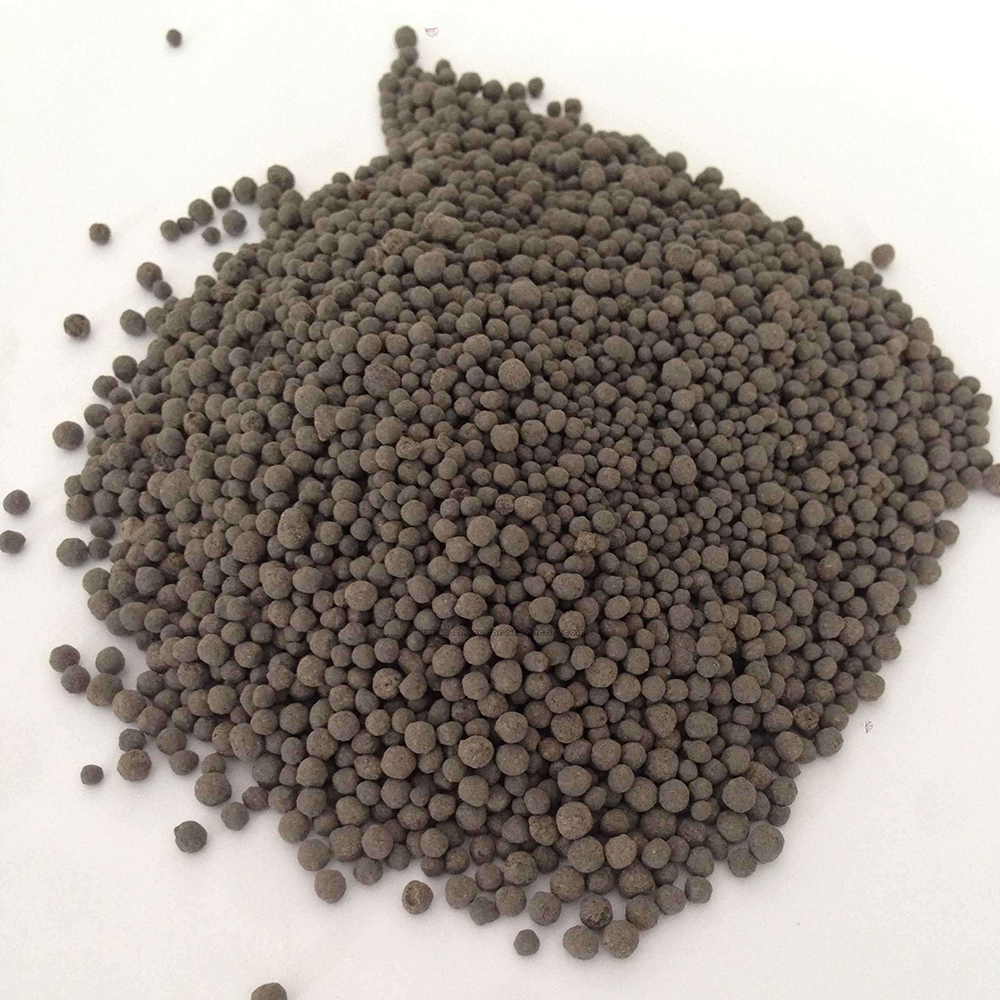Di ammonium phosphate (DAP, chemical formula: (NH4)2HPO4) is a leading phosphate fertilizer globally renowned for its balanced phosphate and nitrogen content, high solubility, and multi-industry applications.
Explore the latest industry trends, in-depth technical data, manufacturing process-with visual diagrams, leading manufacturers comparison, and real-world case studies that emphasize the superior properties of di ammonium phosphate fertilizer.
1. Global Industry Trends and Market Overview
Di ammonium phosphate is the dominant phosphate fertilizer since the 1980s, accounting for almost 40% of global phosphate fertilizer consumption. Increasing agricultural intensification, steady demand from the feed, food, chemical, metallurgy, firefighting, and water treatment sectors, and a shift toward higher-efficiency granular fertilizers are shaping the DAP market. According to FAO reports, global production capacity reached 24 million metric tons (2023) with a CAGR of 3.1% over five years.
2. Di Ammonium Phosphate (DAP) Technical Specifications
The technical superiority of di ammonium phosphate arises from its controlled formulation, high N and P2O5 efficiency, and compatibility with international quality standards (e.g., ISO 7409:1984, FAO/WHO, ANSI).
| Parameter | Unit | Standard Value | Test Method/Standard |
|---|---|---|---|
| Total Phosphorus (as P2O5) | % | ≥ 52 | ISO 7409:1984 |
| Total Nitrogen (as N) | % | ≥ 18 | ISO 7409:1984 |
| Moisture | % | ≤ 1.5 | ISO 760:1978 |
| Free Acid (as H3PO4) | % | ≤ 0.2 | ISO/TS 21708 |
| Water Solubility | % | 99.8 | ISO 760:1978 |
| Granule Size (2–4mm) | % | 90–95 | ANSI/AWWA |
| pH (1% Solution) | – | 7.5–8.0 | ISO 4875 |
| Heavy Metals (Pb, Cd, As) | mg/kg | ≤ 5 | FAO/WHO |

3. Manufacturing Process of Di Ammonium Phosphate (DAP)
Step-by-Step Process Flowchart & Key Process Stages
Di ammonium phosphate is synthesized through a controlled reaction of phosphoric acid and ammonia. The process ensures:
- Material Purity: Use of high-grade raw phosphoric acid (≥ 52% P2O5) & ammonium (99%), meeting ISO and ANSI standards.
- Advanced Process: Casting and granulation units are used for forming uniform granules. Many suppliers use CNC-controlled granulators for precision sizing and increased durability.
- Quality Inspection: Every batch is subjected to elemental analysis, moisture assessment (ISO 760:1978), and heavy metal screening.

Process Stages:
- Ammonia Storage & Vaporization ➜ Phosphoric Acid Supply
- Controlled Reaction Chamber:
(NH4)2HPO4 Crystallization - Slurry Mixing ➜ Granulation (CNC monitored)
- Drying (in rotary/counterflow dryer) ➜ Particle Screening for Size Uniformity
- Quality Testing Lab (ISO 7409, ISO 760, ANSI)
- Packaging (moisture-proof, anti-caking bags, ISO/FAO certified)
Material Selection:
Most DAP is composed of white/gray crystalline granules of high purity, with anti-caking coatings ensuring long shelf-life. All manufacturing lines comply with ISO, ANSI, and FAO/WHO guidelines.
Precision Engineering: Modern DAP plants employ advanced CNC granulation for granule uniformity (2-4mm), rotary kilns for high-efficiency drying, and ERP-based logistics for batch traceability.
Lifespan: Properly stored di ammonium phosphate has a shelf-life of 2–3 years without significant loss of nutrient content.
4. DAP vs. Alternatives: Competitor Comparison Table
How does di ammonium phosphate compare to other market-standard phosphate fertilizers? Here is a side-by-side data comparison:
| Fertilizer | N Content (%) | P2O5 Content (%) | Solubility (%) | Typical Granule Size (mm) | Storage Life (Years) | Chlorine Free? |
|---|---|---|---|---|---|---|
| Di Ammonium Phosphate (DAP) | 18 | 52 | 99.8 | 2–4 | 3 | Yes |
| Mono Ammonium Phosphate (MAP) | 11 | 60 | 99.8 | 2–4 | 2 | Yes |
| Triple Superphosphate (TSP) | 0 | 46 | 98.0 | 1–3 | 2 | Yes |
| NP 20-20 Fertilizer | 20 | 20 | 93.0 | 1–3 | 1–2 | No |
5. Application Scenarios & Technical Advantages in Key Industries
Multi-Industry Applications
- Agriculture: Major crop nutrition solution for cereals, oilseeds, fruits & vegetables — assures rapid root and biomass development, especially in alkaline soils.
- Metallurgy: Powerful fluxing agent and anti-slag additive owing to high-purity, low heavy metal content.
- Water Treatment: Efficient corrosion inhibitor, scale-preventer in boiler & drinking water pipes (due to 100% solubility).
- Fire Protection: Fire retardant chemical additive in fabrics and wood.
- Food & Feed Industry: FDA/China GB/FCC compliant ingredient for yeast nutrition and food phosphate blends.
Case Study: Saudi Phosphate Company – Year 2023
- Switched to di ammonium phosphate for cereal production on 10,000 ha, achieved 8% yield increase and reduced fertilizer input by 15% (source: ICIS, 2023).
- Annual fertilizer cost saving: $310,000, with measurable improvements in soil chemistry (higher available phosphorus, improved pH stability).
- Consistent with ISO 7409 and FAO nutrient management guidelines.
Case Study: Large-Scale Steelmaker – Water Treatment (2022)
- Used technical-grade di ammonium phosphate as corrosion inhibitor in pipework, reducing scale deposition by 18%.
- Maintained heavy metal ion concentrations below 2 mg/L—well within EPA regulatory limits.
- Minimal maintenance shutdown and 97.5% system uptime.
6. Leading Suppliers & Manufacturer Credentials
- FIZA CHEMICALS: 22+ years in phosphate chemicals, ISO 9001, 14001, FDA certified; major clients in Middle East, Europe, S. America.
- Mosaic (USA): World’s top capacity (over 6MT/yr), vertical integration, NSF/ANSI, Agmark and ISO accredited.
- Ma’aden (Saudi Arabia): ME region’s leader, built new DAP mega-complex in 2018, meets REACH and ISO standards.
Purchase Custom Solutions: Professional suppliers like FIZA CHEMICALS offer tailored particle sizing (2–5mm), enhanced coatings (anti-cake, slow-release), pre-mix trace elements, as well as industry-specific packaging and traceability batch support.

7. Customization, Delivery, Quality Guarantee & Customer Support
- Customization: Granule size, solubility profile, packaging (UV-resistant, moisture-proof), additive blends per client needs.
- Delivery Lead Time: 10–21 days typical (ex-works or CIF options); full order tracking with ERP.
- Quality Assurance: Each batch is tested to ISO, ANSI, and local standards; full COA and batch report provided.
- Warranty: 2-year standard shelf-life warranty; anti-caking and nutrient content guarantees.
- Customer Support: 24/7 technical hotline, live chat, on-site technical assistance and agronomic advisory.
8. FAQ: Di Ammonium Phosphate (DAP) – 7 Key Technical Questions
-
Q1: What is the optimal grade/composition of di ammonium phosphate for agriculture?
A1: Standard agricultural DAP grade is 18-46-0 or 18-52-0 (N:P₂O₅:K₂O, w/w), with nitrogen ≥ 18% and available phosphorus ≥ 46–52%. These grades meet ISO 7409/FAO norms.
-
Q2: What are the typical granule size specifications for di ammonium phosphate fertilizer?
A2: DAP is usually granulated in 2-4mm size (ANSI compliant), ensuring uniform distribution and minimal dust. Customized sizing up to 5mm is possible for mechanized sowing.
-
Q3: What international safety and purity standards does DAP conform to?
A3: Leading DAP brands conform to ISO 7409, ISO 9001, FAO/WHO, and, for food/feed grades, FCC, FDA, China GB purity requirements. Heavy metal and contaminant limits are strictly enforced.
-
Q4: How does DAP's corrosion inhibition in water treatment compare to sodium polyphosphate?
A4: DAP forms a stable phosphate film in pipes, effectively curbing corrosion. Due to high purity, it's safer for potable water. Sodium polyphosphates may hydrolyze faster and provide weaker protection under high temperature.
-
Q5: Can DAP be used with micro-irrigation or fertigation systems?
A5: Yes. DAP's 99.8% solubility and minimal insoluble residue (Micro-drip application is widely adopted in horticulture and open-fields.
-
Q6: Is DAP suitable for organic agriculture or hydroponics?
A6: Conventional DAP is synthetic; only DAP produced with biogenic ammonia/phosphoric acid and certified by IFOAM/OMRI is considered for organic use. For hydroponics, technical grade is permitted if purity and contaminants meet GBR/FDA.
-
Q7: What installation or handling standards must be followed for DAP in bulk storage?
A7: Follow ANSI/AWWA B507 and OSHA bulk handling norms: use sealed, dry, ventilated silos; ensure automated auger/can-stackers are corrosion resistant; provide PPE for dust exposure, and train staff per ISO 45001.
9. Chemical Formula & Functional Chemistry
Di ammonium phosphate's chemical formula is (NH4)2HPO4. It comprises two ammonium (NH4+) ions and one hydrogen phosphate (HPO42–). Upon application, it dissolves rapidly, providing both available nitrogen and phosphorus for plant uptake and industrial use.
- Molecular Weight: 132.06 g/mol
- Physical Form: White/gray crystalline granules, non-hygroscopic
- Stability: Chemically stable up to 155°C; decomposes, releasing NH3 above this point.
- Safety: Non-flammable, low environmental hazard (GHS/SGA). Handle to avoid inhalation of dust.
10. Compliance, Authoritative Citations & Certification
- ISO 9001, 14001 Lead Certification across factories ensure consistent quality and environmental management.
- Long-term strategic clients include: BASF (chemistry), ADM (agro), Aramco (oilfield), COFCO, and multiple government agencies.
- Official standards: ISO 7409:1984 Fertilizers, FAO/WHO Codes, FDA regulations for food-grade phosphates.
Technical Documentation & Batch Traceability: All orders are provided with a Certificate of Analysis (COA), production tracking, and full technical dossiers for regulatory/REACH compliance.
Conclusion & Industry References
Di ammonium phosphate (DAP) stands at the forefront of sustainable agriculture and industrial phosphate usage. Its high solubility, multi-industry applications, and compliance with global standards — together with custom options and expert supplier support — make it the logical choice for producers worldwide.
For reliable, high-performance di ammonium phosphate — from field to factory — leading partners such as FIZA CHEMICALS deliver both product and expertise.
- FAO/WHO Fertilizer Standards: https://www.fao.org/faostat/en/#data/
- ICIS, DAP Market Features (2023): ICIS News
- ISO 7409:1984 Fertilizers - https://www.iso.org/standard/15479.html
- USDA Fertilizer Use Summaries: https://www.ers.usda.gov
- AgTalk Forum: Farmer DAP Experiences NewAgTalk














